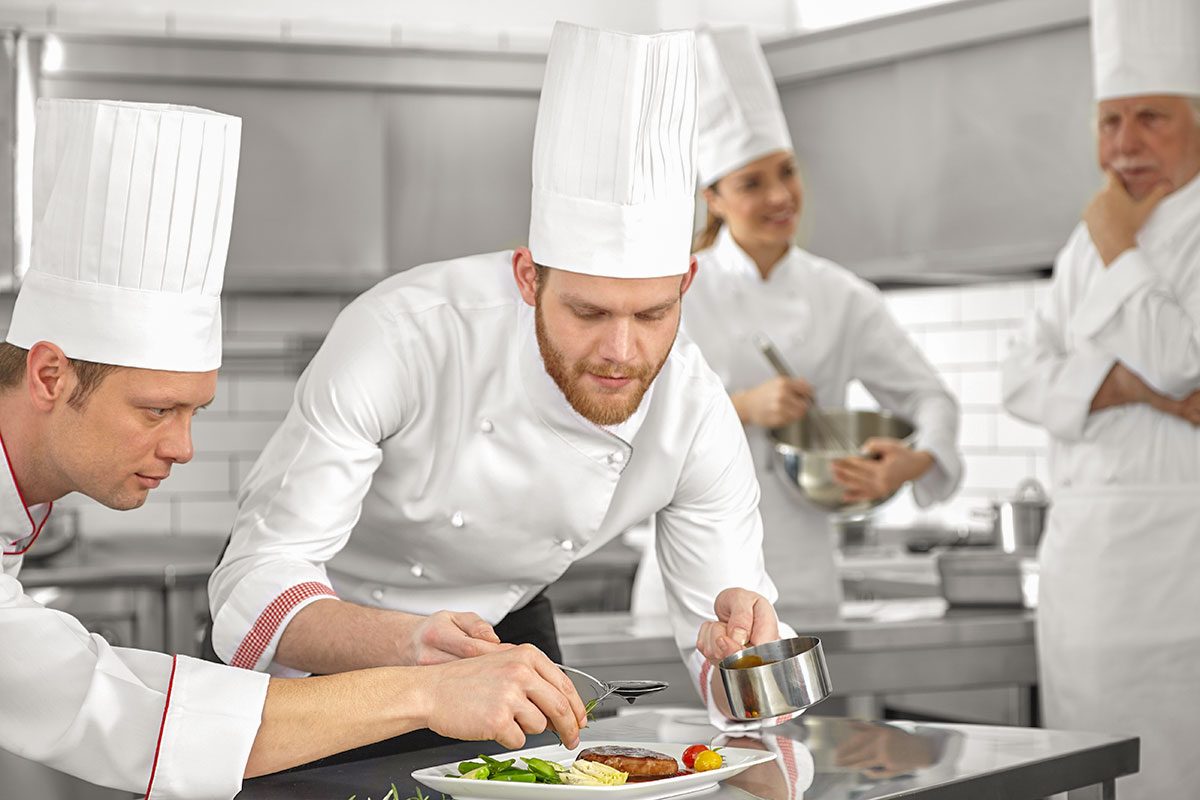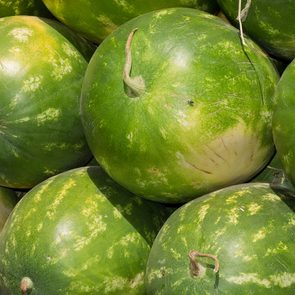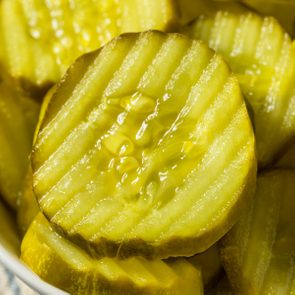They're not just for show—those towering white hats carry centuries of culinary history, clues to kitchen hierarchy and more than 100 eggs' worth of symbolism

Here’s the Surprising Reason Chef Hats Are So Tall

I worked in restaurants for more than a decade, and if there’s one thing you learn quickly, it’s how to spot who’s doing what. The hosts are usually the best-dressed. The servers all wear black and move like caffeinated gazelles. And the chefs? They’ve got the most iconic uniform in the building: baggy checkered pants, clogs, a gleaming knife they treat like a newborn and—of course—the chef’s hat. That towering toque is so iconic, it’s how you know the rat in Ratatouille is a real chef and not just a rodent with dreams. But where did the chef’s hat come from? And why are chefs hats so tall?
I always noticed that chef hats varied wildly in shape and height, but I figured it was just a “look at me, I can flambé and fold napkins into swans” kind of thing. Turns out, those hats have an important purpose and hold some surprising secrets. Like, royal-temper-tantrum and ancient-assassin-prevention secrets.
“There’s a beautiful mix of practicality, symbolism and history in culinary uniforms,” says chef Maricel Gentile, owner of Maricel’s Kitchen in East Brunswick, New Jersey, and the author of Maricel’s Simply Asian Cookbook. (Spoiler: Her favorite chef’s hat is a scarf-style head wrap!)
So I asked Gentile and Patti Thomas, the spokesperson for the August Escoffier School of Culinary Arts, the top culinary school in the U.S., to break down the surprisingly weird, surprisingly meaningful world of chef hats. Grab your whisks—and maybe a hair net—and let’s get into it.
Get Reader’s Digest’s Read Up newsletter for more news, humor, cleaning, travel, tech and fun facts all week long.
Why do chefs always seem to wear hats?
Short answer: So no one gets a side of split ends with their split-pea soup. The primary purpose of the chef hat—officially called a toque blanche—is mostly hygiene.
“The main goal is to keep hair tucked away and sweat from dripping,” says Gentile. After all, you don’t want someone’s forehead sweat accidentally salting your risotto.
But there’s more than just hygiene. The type, color and height of a chef’s hat can reflect culinary style, comfort level and even kitchen hierarchy. “For example, in a few traditional restaurants I’ve visited, only the sous chef and executive chef wore the tall hats, making it easier to identify leadership on the line,” Gentile says. “They also help create a unified look and signal professionalism.”
And while you can technically buy one online for your next Halloween costume or sourdough phase, in most professional kitchens, the hat—especially the tall version—is something you earn. “It reflects experience, trust and often leadership in the kitchen,” says Gentile.
When was the “chef’s hat” invented?
The tradition of chefs wearing hats is as old as questionable leftovers. One origin story dates back to the 7th century BCE, when Assyrian King Ashurbanipal made his chefs wear special hats to ensure loyalty—and visibility. If your cook is wearing royal headgear, it makes them easier to spot … and harder for them to poison you. Fast forward to the 1500s, and King Henry VIII reportedly took things up a notch by beheading a chef after finding a hair in his food. (Talk about a zero-tolerance policy.) After that, every chef wore a hat, probably even when they slept.
The modern chef’s hat—the tall white hat we think of today—got its haute-cuisine makeover in the early 1800s, thanks to legendary French chef Marie Antoine-Carême, Thomas says. Inspired by the clean lines and hierarchy of military uniforms, he gave the hat height, starch and attitude. Antoine-Carême’s goal was to elevate chefs from invisible kitchen laborers to respected artisans.

While Antoine-Carême gave the chef’s hat its fashionable flair in the early 1800s, it was legendary French chef Auguste Escoffier who helped cement its place as the symbol of culinary professionalism, Thomas adds. Escoffier, often called the father of modern French cuisine, brought structure and order to kitchens with his brigade system—a military-inspired hierarchy where every chef had a title, a role and, yes, a hat height to match. Your hat was like your résumé on your head.
Why are chef’s hats so tall?
Historically, the height of your hat showed your rank. In this system, the executive chef (aka chef de cuisine) wore the tallest hat in the room, signaling ultimate authority over the saucepans and the people. From there, hat height decreased with rank: sous chefs, line cooks, pastry chefs and so on.
“The taller the hat, the higher your position,” Gentile explains.
How tall is the tall hat? The average classical-style chef’s hat today is between 9 and 12 inches tall. But Antoine-Carême’s own hat reportedly stood a whopping 18 inches tall and was reinforced with cardboard to showcase his top-level expertise, according to the Escoffier School of Culinary Arts. Because nothing says “culinary genius” like a top-heavy paper crown?
The tallest chef’s hat ever recorded was 18 feet. It was made by the Indian Academy to commemorate International Chefs’ Day, but it was for display only. The tallest chef’s hat worn by an actual chef was 15 feet 9 inches tall, according to the Guinness Book of World Records.
What do the pleats mean?
Those vertical pleats that go all the way around the hat aren’t just decorative, they mean something—or at least they used to. Legend has it that the pleats represented the number of techniques a chef had mastered. “So, a hundred pleats for a hundred ways to cook an egg,” Gentile says.
Is it true? “No one’s totally sure, but the tradition stuck,” Thomas says. And hey, if someone claims they’ve mastered a hundred ways to scramble, poach and devil a dozen eggs, who are we to argue? (Seriously, I could only come up with five ways to cook eggs.)
Pleats may also help with airflow, keeping the chef’s head cool in the pressure cooker that is a working kitchen. Think of it as gourmet air conditioning.
What do modern chef’s hats look like?

These days, there’s no one-size-fits-all chef hat—literally or figuratively. While a few restaurants still adhere to the classical guidelines, most go for more practical options like baseball caps, beanies or breathable mushroom caps (no, not that kind). Gentile herself rocks a scarf-style head wrap inspired by Greek mandili and Filipino panyo. “It’s beautiful, practical and feels deeply cultural,” she says.
The best hat depends on the kitchen, the job, the vibe and, of course, what keeps your hair out of the hollandaise. Here are some popular options you might see chefs sporting now:
Skull cap
This snug-fitting cap sits close to the head and is great for keeping hair in check during fast-paced shifts. Bonus: Some versions have mesh tops for ventilation, so you don’t overheat while sauteing your way through Saturday night dinner service.
Beanie
A looser but still close-fitting hat, these aren’t the knit beanies you wear in the winter. The beanie chef hats are generally made from cotton and often come with a velcro strap in the back for easy adjustment. They are comfy, low-maintenance and perfect for chefs who value function over formality while still looking sharp.
Baker’s cap
These kind of look like white mushrooms—floppy on top, sometimes with pleats and usually white. They’re made to be breathable and lightweight because “baking environments are usually warm and the work is more about precision and repetition than hierarchy or presentation,” Gentile says. “The soft cap still keeps hair out of the way, but it allows for more airflow and movement when working long hours near ovens.”
Baseball cap
Baseball caps are a popular pick in casual kitchens and food trucks because they are classic, cool and everyone has at least a couple of these hats in their closet already. They’re adjustable, help with sweat and you can throw your restaurant logo on the front for that extra branding bonus.
Scarf or head wrap
Chef Gentile’s go-to, these wrap-style head coverings combine form, function and cultural flair. They’re breathable, beautiful and perfect for chefs who want to bring a bit of personal style into the kitchen.
Paper toque
For chefs who want the classical toque blanche but need more practicality. The modern version is often made of disposable paper, making it more hygienic and cooler to wear. Many now come open at the top to allow air to circulate while still nodding to tradition.
Hair net or snood
Not glamorous, but totally necessary in industrial or institutional kitchens. These keep things very tidy—perfect for cafeteria chefs, mass production kitchens or anywhere the health code is queen.
Why are chef’s hats white?
Because you can’t hide your sins in white. Seriously, white was chosen to symbolize cleanliness. “White is the easiest color for determining whether an object is dirty or clean,” Thomas says. It’s also harder to hide a marinara mishap, so chefs tend to be more careful when dressed like fresh snow.
That said, some modern kitchens swap in darker hats for a more polished look, especially in open kitchens. Because the only thing worse than watching your risotto burn is watching your chef do it in a stained hat.
Is it a rule that chefs must wear a hat?
Yes, in most professional kitchens, covering the hair/head is either required by health code or enforced as a safety measure, Thomas says. Hairnets, skull caps, ball caps, bonnets, paper toques, wraps—whatever keeps the follicles out of the food.
According to Gentile, “Every kitchen has its own story when it comes to uniforms, but what matters most is how we carry ourselves—with care, with honor and always with love for what we cook and who we serve.” Some kitchens, like Gentile’s, favor practicality and cultural flair over tradition. Others, like culinary schools, still suit up their instructors in full white toques, paying homage to culinary roots, Thomas adds. Whatever form they take, chef hats are a blend of history, hygiene, hierarchy and heat ventilation (that’s four H’s—almost enough to earn your own pleat).
RELATED:
- The Real Reasons Why Milk and Eggs Are Sold in the Back of a Grocery Store
- There’s One Restaurant Where You Can Still Enjoy Eggs for Breakfast on the Cheap
- If You See White Stuff Coming Out of Your Chicken, This Is What It Means
About the experts
|
Why trust us
At Reader’s Digest, we’re committed to producing high-quality content by writers with expertise and experience in their field in consultation with relevant, qualified experts. We rely on reputable primary sources, including government and professional organizations and academic institutions as well as our writers’ personal experiences where appropriate. We verify all facts and data, back them with credible sourcing and revisit them over time to ensure they remain accurate and up to date. Read more about our team, our contributors and our editorial policies.
Sources:
- Maricel Gentile, chef/owner of Maricel’s Kitchen in New Brunswick, New Jersey, and author of Maricel’s Simply Asian Cookbook; phone interview, July 14, 2025
- Patti Thomas, spokesperson for the August Escoffier School of Culinary Arts; email interview; July 14, 2025
- Auguste Escoffier School of Culinary Arts: “A History of the Chef’s Hat”
- Passion of a Foodie by Heidemarie Vos























